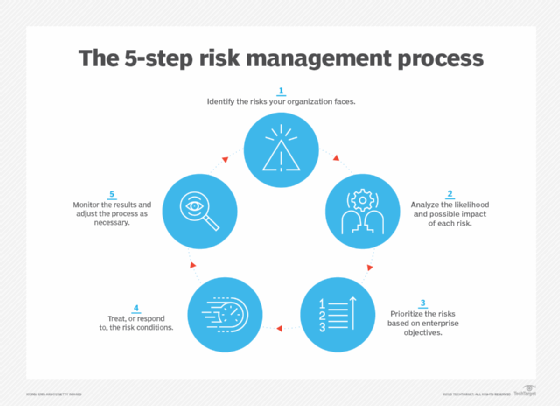The Essential Importance of Risk Management in Protecting Company Assets
The Essential Importance of Risk Management in Protecting Company Assets
Blog Article
Discovering the Value of Risk Management for Effective Decision-Making Approaches
In the complex globe of business, Risk Management emerges as a vital element in the decision-making process. The ability to recognize possible dangers and possibilities, and plan accordingly, can spell the difference between success and failure.
Comprehending the Idea of Risk Management
Risk Management, a vital component in decision-making, is frequently misunderstood or oversimplified. Risk Management involves structured and self-displined approaches, making use of data and insightful analyses. From financial unpredictabilities, legal responsibilities, tactical Management errors, to crashes and natural catastrophes, it deals with various threats - importance of risk management.
The Role of Risk Management in Decision-Making Processes
In the world of tactical planning and business operations, Risk Management plays an essential function in decision-making processes. It aids in determining prospective hazards and uncertainties that might affect the accomplishment of service purposes. By tracing these risks, business can develop approaches to mitigate their impact, making certain business continuity and stability. Risk Management thus ends up being an essential device in decision-making, helping leaders to make informed choices based on a thorough understanding of the threats involved. It encourages a proactive method, allowing companies to prepare for and prepare for feasible future circumstances. This significantly decreases the probability of adverse repercussions, promoting a lot more reliable and effective decision-making methods. Risk Management serves as an essential part in the decision-making procedures of any kind of company.

How Risk Management Enhances Strategic Preparation
In the context of calculated planning, Risk Management plays a pivotal duty. Starting with the identification of possible threats, it better reaches the application of Risk reduction steps. The duty of Risk Management is dynamic yet not static, as it requires constant surveillance and adjusting of methods.
Identifying Prospective Risks

Carrying Out Risk Reduction
Risk mitigation strategies can vary from Risk avoidance, Risk transfer, to risk reduction. Each approach should be tailored to the specific Risk, considering its prospective effect and the company's Risk tolerance. Reliable Risk mitigation needs a deep understanding of the Risk landscape and the prospective effect of each Risk.
Surveillance and Readjusting Techniques
Though Risk mitigation is an essential step in critical preparation, continuous monitoring and adjustment of these techniques is just as important. It likewise supplies an opportunity to examine the success of the Risk Management measures, enabling changes to be made where essential, further improving calculated preparation. Monitoring and readjusting Risk Management methods is an important component for boosting an organization's resilience and calculated planning.
Situation Studies: Successful Risk Management and Decision-Making
In the world of company and financing, successful Risk Management and decision-making usually serve as the pillars of prosperous business. These instances highlight the worth of astute Risk Management in decision-making procedures. These cases highlight the important role of Risk Management in strategic decision-making.
Devices and Techniques for Effective Risk Management
These tools, such as Risk registers and heat maps, help in determining and assessing prospective dangers. Risk reaction strategies, a crucial element of Risk Management, involve look here approving, staying clear of, transferring, or mitigating risks. With these devices and strategies, decision-makers can navigate the facility landscape of Risk Management, thus facilitating educated and efficient decision-making.
Future Fads in Risk Management and Decision-Making Techniques
As we check out the large landscape of Risk Management, it ends up being noticeable that the devices and methods used today will certainly remain to develop. Future fads direct towards an enhanced reliance on modern technology, with artificial intelligence and artificial intelligence playing significant roles. These technologies will certainly enable organizations to forecast potential threats with higher precision site link and make even more informed choices. Additionally, there will certainly official website be a growing focus on resilience, not simply in handling threats however also in jumping back from unfavorable scenarios. The concept of Risk society, where every member of a company is aware and included in Risk Management, will certainly gain extra prestige. These trends advertise a more inclusive and aggressive approach towards Risk Management and decision-making.
Verdict

Risk Management therefore ends up being an important tool in decision-making, aiding leaders to make enlightened options based on a comprehensive understanding of the threats entailed. Risk reduction approaches can vary from Risk avoidance, Risk transfer, to run the risk of reduction (importance of risk management). Reliable Risk mitigation calls for a deep understanding of the Risk landscape and the potential impact of each Risk. Risk feedback approaches, a key part of Risk Management, entail accepting, avoiding, moving, or mitigating risks. The principle of Risk society, where every participant of an organization is aware and involved in Risk Management, will get a lot more prominence
Report this page